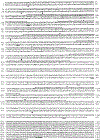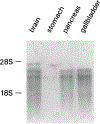Molecular cloning of the human brain and gastric cholecystokinin receptor: structure, functional expression and chromosomal localization
- PMID: 1280419
- PMCID: PMC6719700
- DOI: 10.1016/0006-291x(92)91557-7
Molecular cloning of the human brain and gastric cholecystokinin receptor: structure, functional expression and chromosomal localization
Abstract
The receptors for the brain and gastrointestinal peptide, cholecystokinin, can be classified into CCKA and CCKB subtypes. Having recently cloned the rat CCKB receptor, we used it's cDNA to isolate the human CCKB receptor homologue from brain and stomach which encodes a 447 amino acid protein with 90% identity to both rat CCKB and canine gastrin receptors. Northern hybridization identifies transcripts from stomach, pancreas, brain and gallbladder. The CCKB receptor gene maps to chromosome 11. Expression of the receptor cDNA in COS-7 cells was characteristic of a CCKB receptor subtype pharmacology. These data confirm that we have cloned a novel gene for the human brain and stomach CCKB receptor.
Figures




References
Publication types
MeSH terms
Substances
Associated data
- Actions
- Actions
- Actions
- Actions
- Actions
- Actions
- Actions
- Actions
- Actions
- Actions
Grants and funding
LinkOut - more resources
Full Text Sources
Other Literature Sources
Molecular Biology Databases

